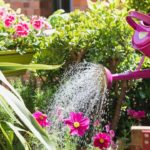A slow drip system ensures your plants stay hydrated and happy while you’re away. With this method, you can confidently leave your plants unattended for several days without worrying about finding a plant-sitter.

By Hoàng Anh
3 Essential Steps for Keeping Your Newly Purchased Flowers Alive for More Than a Week
It is not uncommon for plants to die shortly after being purchased and planted, often due to this common mistake.
Solving 5 Major Planting Issues: Inserting Chopsticks into Flower Pots
Improper watering is the leading cause of 80% of houseplants dying. To prevent this, simply insert a stick into the plant pot. Yes, it’s that simple!







































